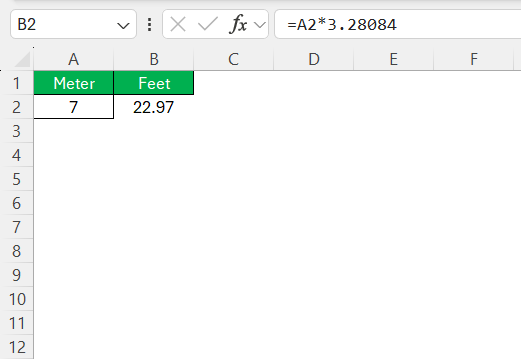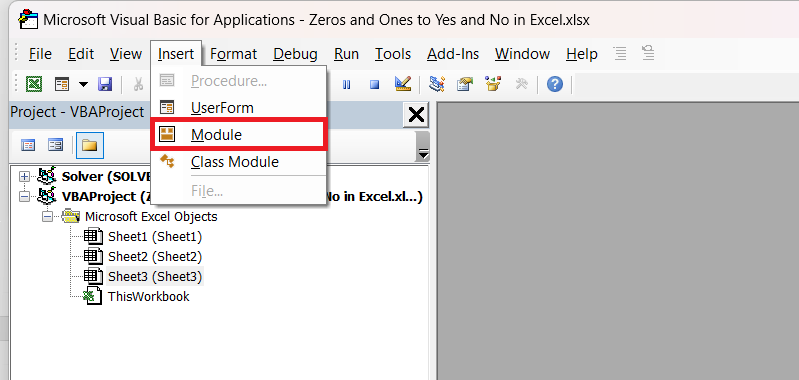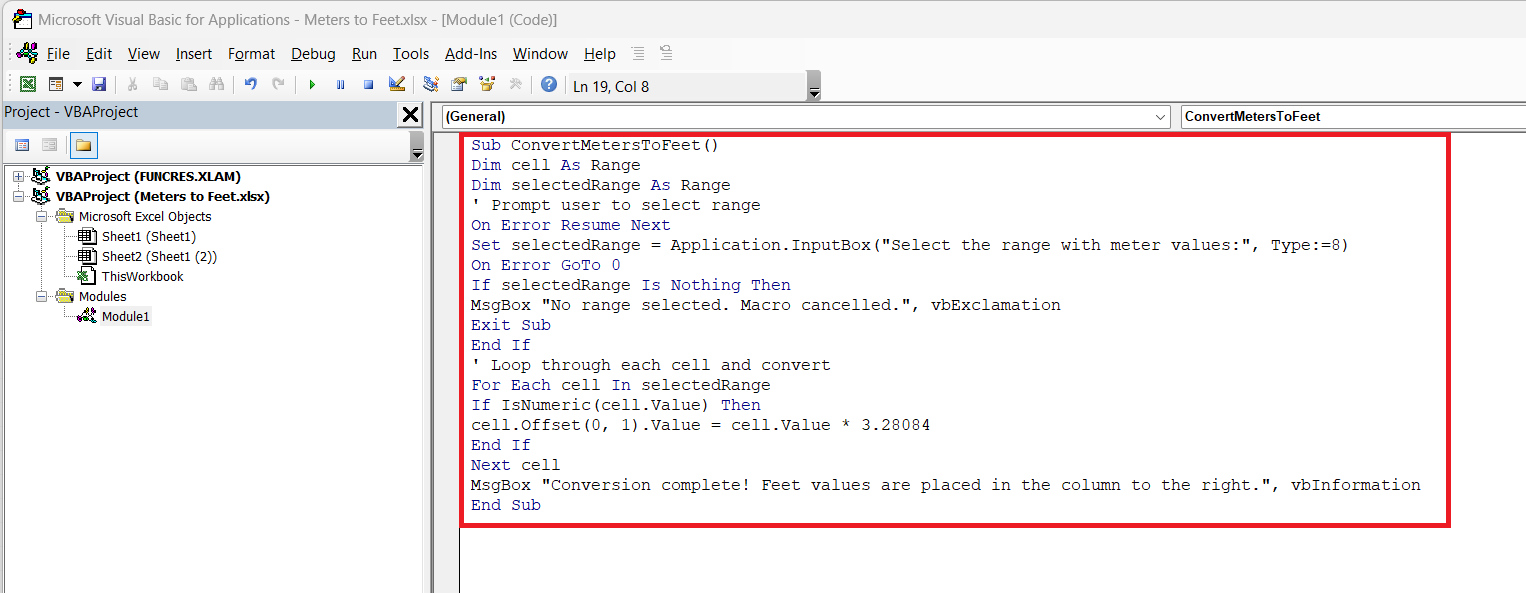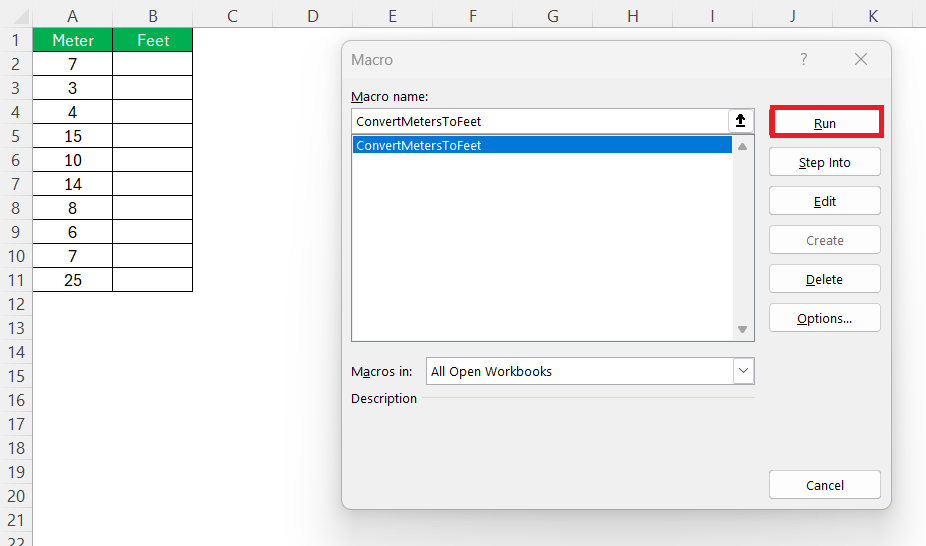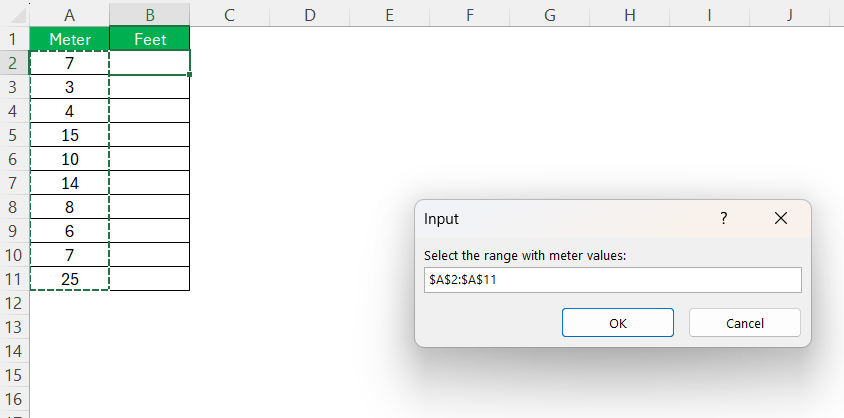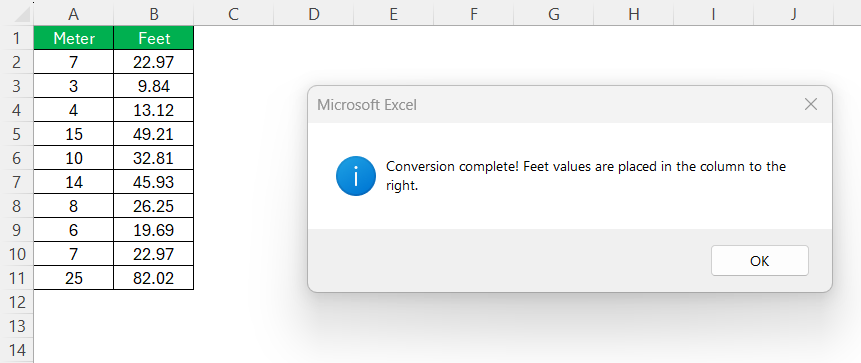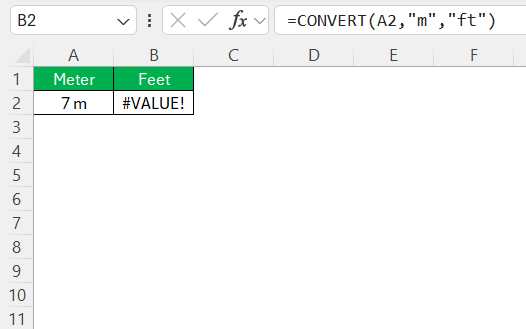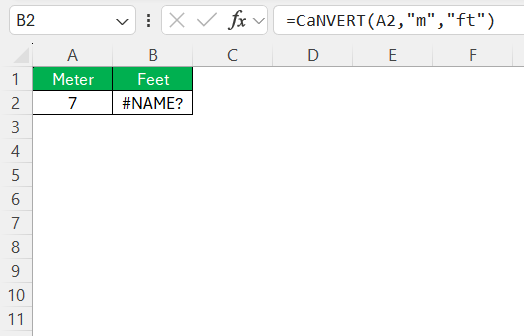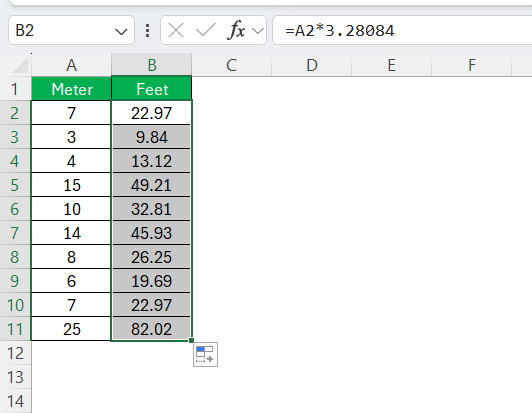If you’re like me, Excel is your go-to tool for just about everything—budgets, lists, quick calculations, and yes, even unit conversions. The other day, I was working on a project where I needed to convert a list of measurements from meters to feet. At first, I thought I’d have to look up some complicated method or use a plug-in. But guess what? It’s actually super easy to do right inside Excel, and I’m here to show you how to convert meters to feet.
Key Takeaways:
- Excel offers multiple ways to convert meters to feet, including formulas, the CONVERT function, and macros.
- The conversion factor is 1 meter = 3.28084 feet, which ensures accurate results.
- Macros are great for automating conversions across large datasets quickly.
- Function errors often occur due to incorrect syntax, invalid units, or non-numeric inputs.
- Batch processing with formulas or macros saves time and reduces manual errors.
Table of Contents
Introduction
Why Convert Meters to Feet?
Converting meters to feet is often essential due to differences in measurement systems used globally. The metric system, with meters as a unit of length, is widely adopted worldwide, while the imperial system, using feet, is still prevalent in countries like the United States. This disparity necessitates conversion for purposes such as international business, scientific research, and health assessments, ensuring clear communication across different measurement systems.
Overview of Conversion Challenges
Converting measurements from meters to feet may seem straightforward, but it presents several challenges. A primary issue is the precision required, as even small errors can lead to significant discrepancies, particularly in fields like engineering and construction. Moreover, misunderstandings can arise when dealing with fractional units or when rounding is involved, potentially affecting the integrity of the converted data.
Another challenge involves ensuring that formulas or tools used for conversion are applied consistently across datasets to prevent errors. Without robust systems and checks in place, the risk of misinterpretation increases, underscoring the importance of accurate and mindful conversion practices.
Simple Methods to Convert Meters to Feet
Utilizing the CONVERT Function
The CONVERT function in Excel is a powerful tool designed for seamlessly converting units, including meters to feet. This function requires three arguments: the number to convert, the original unit (from_unit), and the target unit (to_unit). For converting meters to feet, the syntax would be =CONVERT(number,"m","ft").
This method ensures accuracy and consistency across large datasets without manual recalculations, making it ideal for projects with frequent or bulk conversions. The CONVERT function simplifies the process, minimizing potential errors inherent in manual calculations and providing immediate and reliable results.
It is a versatile feature, beneficial for those often working with varying metric and imperial measurements.
Applying Formula Builder
Excel’s Formula Builder facilitates the creation of complex formulas like the conversion from meters to feet. By using this tool, even users with limited Excel experience can construct accurate formulas with ease. The Formula Builder guides them through each step, suggesting possible functions and aiding in selecting the correct parameters.
For a meters-to-feet conversion, one would enter the function =A2*3.28084 if the value in meters is located in cell A2.
The Formula Builder ensures each component of the formula is correctly applied, reducing the risk of errors. This tool is advantageous in environments requiring varied calculations, as it provides a user-friendly approach to constructing and validating formulas for accurate results.
Using Macros for Automation
Using macros for automation in Excel provides an advanced level of efficiency, particularly for converting large datasets from meters to feet. To create a macro for conversion of meters to feet, follow the steps below:
STEP 1: Press ALT + F11 to open the VBA editor.
STEP 2: In the editor, I went to Insert > Module.
STEP 3: Here’s the simple macro I wrote to convert meters to feet:
Sub ConvertMetersToFeet()
Dim cell As Range
Dim selectedRange As Range
' Prompt user to select range
On Error Resume Next
Set selectedRange = Application.InputBox("Select the range with meter values:", Type:=8)
On Error GoTo 0
If selectedRange Is Nothing Then
MsgBox "No range selected. Macro cancelled.", vbExclamation
Exit Sub
End If
' Loop through each cell and convert
For Each cell In selectedRange
If IsNumeric(cell.Value) Then
cell.Offset(0, 1).Value = cell.Value * 3.28084
End If
Next cell
MsgBox "Conversion complete! Feet values are placed in the column to the right.", vbInformation
End Sub
STEP 4: Press ALT + F8 to open the Macro window.
STEP 5: Select the range containing the values in meters.
The values in meters will be converted to feet.
Troubleshooting Common Issues
Addressing Inaccurate Results
Addressing inaccurate results in Excel conversions involves a systematic review of potential sources of error. Start by checking your input data to ensure values are entered correctly, as even a minor mistake can propagate errors. Verify that the formulas reference the correct cells and that the function syntax is accurate; even a misplaced decimal or typo can lead to incorrect outputs. It’s also crucial to confirm that the units used in the formula match the intended conversion—in this case, ensuring meters are correctly being converted to feet.
If inaccuracies persist, perform a spot-check with sample calculations using a reliable calculator or an online tool to compare results. This can help identify whether the Excel formula or the initial data input is at fault.
Lastly, consider seeking a colleague’s review to provide fresh insight, potentially catching mistakes that were inadvertently overlooked. Through this meticulous review process, you can enhance data integrity and trust in your conversion outputs.
Dealing with Function Errors
Function errors in Excel, such as #VALUE! or #NAME?, can arise during unit conversions and need careful troubleshooting. Begin by examining the formula to ensure all arguments are correctly specified and that the units are valid. For example, in the formula =CONVERT(A2,"m","ft"), confirm that “m” and “ft” are accepted Excel unit abbreviations.
Next, check the data types in your referenced cells; a common cause of #VALUE! errors is using non-numeric data in a formula expecting a number.
Additionally, ensure no blank or incorrectly formatted cells are referenced. If #NAME? appears, double-check the function syntax and spelling, as Excel doesn’t recognize incorrectly spelled names.
Utilize Excel’s built-in error-checking features, which can guide you on common issues and suggest corrections.
Leveraging these troubleshooting steps aids in swiftly rectifying function errors, ensuring smooth and accurate conversions. If problems persist, consulting Excel’s Help resources or forums might provide further insights into more complex issues.
Advanced Tips for Efficient Conversions
Batch Processing Large Data Sets
Batch processing large datasets in Excel for conversions such as meters to feet can dramatically improve workflow efficiency. To achieve this, organize your data systematically, ensuring each meter value occupies a sequential cell in a column. Utilize Excel’s formulas and automatic fill features to process large volumes of data quickly.
Begin by entering a suitable conversion formula, like =A2*3.28084 or =CONVERT(A2,"m","ft"), in the first cell of your target column.
Then, use the Fill Handle to drag the formula down through the entire column, matching the data length in your document.
This method applies the conversion formula consistently across all entries, maintaining uniform accuracy and eliminating manual input errors. For those familiar with Visual Basic for Applications (VBA), creating a macro can further automate batch processing, allowing for more advanced functionalities, such as conditional conversions or additional checks for data consistency. Through these techniques, handling extensive datasets becomes manageable, saving time and reducing error rates significantly.
FAQs
How do I convert meters to feet in Excel without formulas?
You can convert meters to feet in Excel without using formulas by manually calculating the conversion factor. First, multiply each meter value by 3.28084 using a calculator. Then, input the resulting feet values directly alongside the original meter values in a new column within your Excel sheet to maintain a record of the conversions.
Can I automate the conversion process in Excel?
Yes, you can automate the conversion process in Excel using macros or the Fill Handle feature. Macros allow you to record a series of steps and execute them with a single command, while the Fill Handle can be used to apply a conversion formula across multiple cells efficiently. Both methods ensure quick and consistent conversions.
What are common errors when using the CONVERT function?
Common errors when using the CONVERT function include mistyped unit codes, which lead to #N/A errors, and the use of incompatible units, causing similar results. Additionally, using non-numeric data produces #VALUE! errors. To avoid these, ensure correct syntax, valid unit codes, and that all input data is numerical.
How to do unit conversion in Excel?
To perform unit conversion in Excel, you can use the CONVERT function. Enter the syntax =CONVERT(number, from_unit, to_unit) in a cell, replacing the placeholders with the specific measurement and units. Ensure units are in Excel’s accepted abbreviations, and apply this formula across your data to achieve consistent conversions.
What is a square meter (m2)?
A square meter (m²) is the International System of Units (SI) measurement for area, defined as the area of a square with sides one meter in length. It’s widely used worldwide to quantify the size of spaces like land, rooms, and buildings, providing a standardized and relatable way to express spatial dimensions in real estate, construction, and planning contexts.
John Michaloudis is a former accountant and finance analyst at General Electric, a Microsoft MVP since 2020, an Amazon #1 bestselling author of 4 Microsoft Excel books and teacher of Microsoft Excel & Office over at his flagship MyExcelOnline Academy Online Course.


